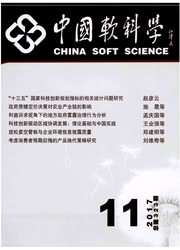

 中文摘要:
中文摘要:
论文以南方集体林区主要造林树种杉木为例,通过160户农户的实地调查和风险偏好实验,运用修正的Faustmann-Hartman模型分析了不同风险态度农户的森林碳汇供给;同时,运用回归计量模型分析了影响农户家庭碳汇供给的社会经济因素。在此基础上,得出相关结论:(1)不同风险类型农户在考虑碳收益情景下的最佳采伐决策相对于传统单一木材收益目标并没有发生变化,且单位面积碳汇供给也基本相同;(2)风险偏好类型农户群体相对于风险厌恶群体森林碳汇供给比其他风险态度农户更多;(3)政府对林农的碳汇营林补贴会有效促进碳汇供给,同时应引导规模大户和社会资本率先发展碳汇林业;(4)政府应在固碳效果较好的树种主产区设立碳汇林业实验区,在这些地区优先开展碳汇林业试点。
 英文摘要:
英文摘要:
Based on the Chinese fir as case tree, this paper used revised Faustmann-Hartman model to analyze the carbon supply of households with different risk attitude through HH survey and risk preference experiment, also it analyzed the social and economic factors which affected the households' carbon supply. Finally, it gave the conclusions that : ( 1 ) harvest decision-making of households groups with different risk attitudes have not changed in the scenario of carbon benefit compared with traditional forest mangement ; ( 2 ) Compared with other groups, households in risk -preference group prefer ro provide more carbon sequestration due to contracted with larger scale forestland; (3)Government should design carbon forest management subsidy, and drive more social capitals and large-scale households to make carbon forest management initiatively; (4) it' s important to build carbon forest model zone in some area which have large number of tree species with high carbon fix effect.
 同期刊论文项目
同期刊论文项目
 同项目期刊论文
同项目期刊论文
 期刊信息
期刊信息
